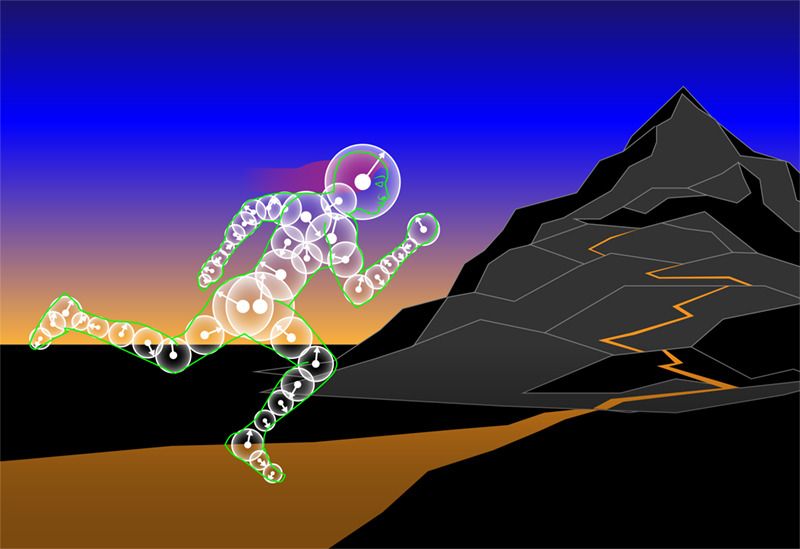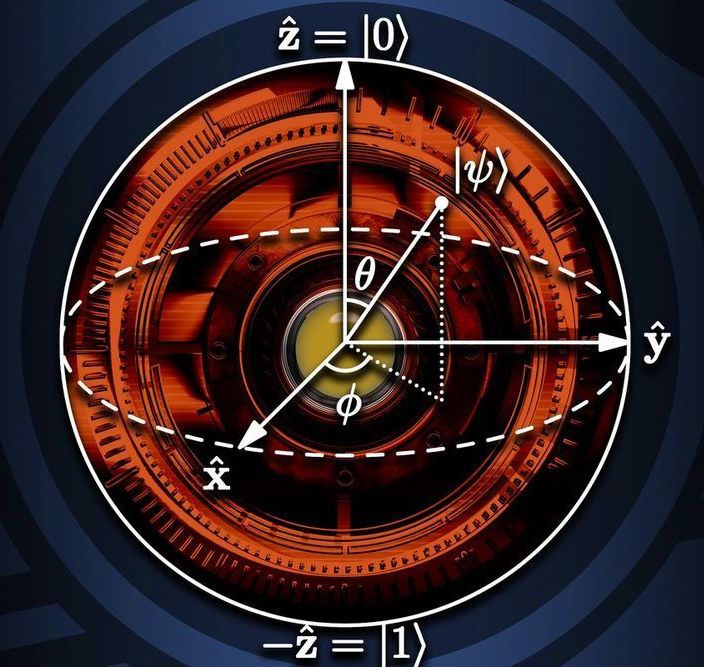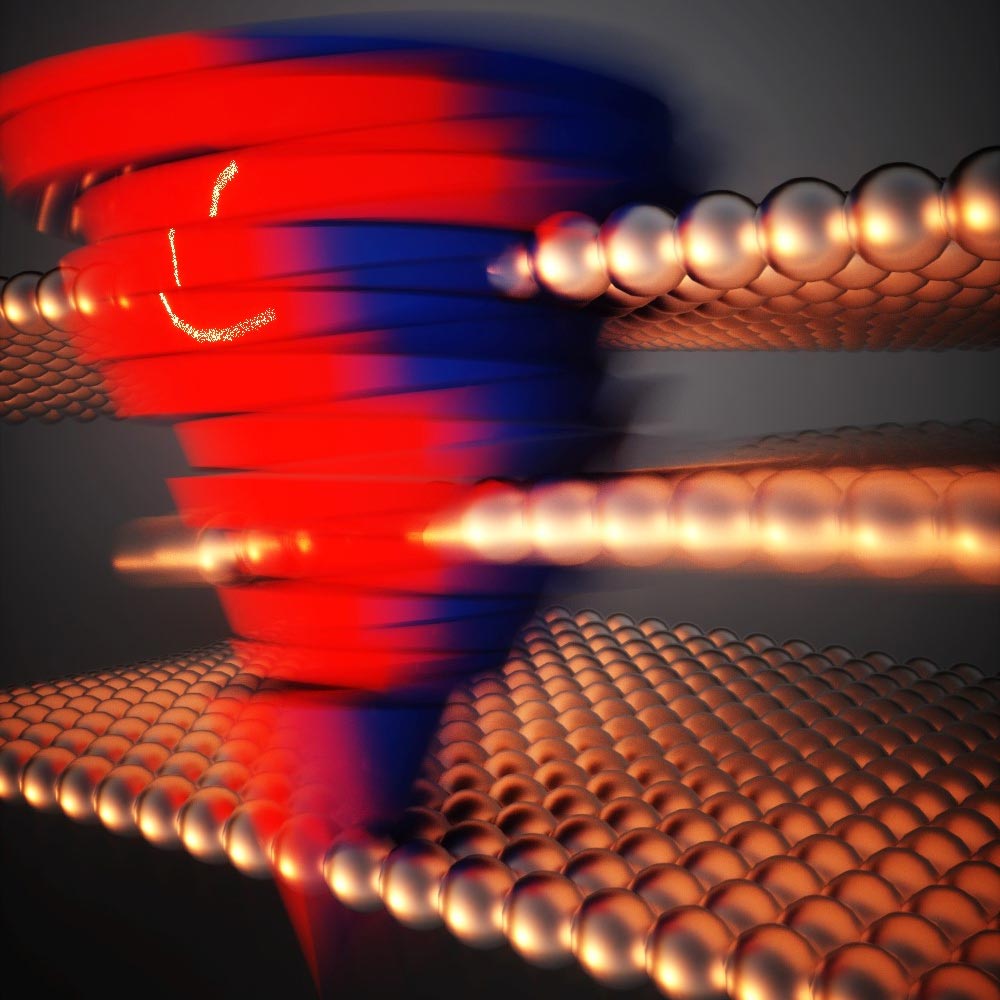To maintain its leadership in quantum computing technology, the US must embrace a culture shift that fuses three important elements: science, a roadmap, and agility.


The achievement opens a pathway for development of the first practical and efficient devices to generate and detect light at terahertz wavelengths—between infrared light and microwaves. Such devices could be used in applications as diverse as communications in outer space, cancer detection, and scanning for concealed weapons.
The research could also enable exploration of the basic physics of matter at infinitesimally small scales and help usher in an era of quantum metamaterials, whose structures are engineered at atomic dimensions.

The cosmos was born in a churning fluid 300 million times hotter than the sun. We’ve recreated this hell, and it’s not just hot, it is also very, very strange, says Amanda Gefter (science writer based in London). TO LOOK deep into the fundamental structure of matter is to look billions of years back in time, to the moment when matter first blinked into being. Recreating the conditions of that moment has long been an aim for physicists wanting to understand how the universe evolved from the cosmic fireball that existed a fraction of a second after the big bang. Now researchers at the Relativistic Heavy Ion Collider (RHIC) at Brookhaven National Laboratory in Upton, New York, have, almost certainly, finally recreated the moments after creation. By colliding nuclei together at enormous speeds, RHIC experimenters were able to break down the structure of nuclear matter. This resulted, most experts agree, in the formation of a long-sought-after plasma that is believed to be the primal stuff of the cosmos, the state of matter at the beginning of time. It turns out, though, that the nature of matter is inextricably tied to the vacuum in which it resides. And the RHIC experiments have thrown up some surprises. They seem to show that the vacuum is a richer and more complicated place than was previously imagined. They suggest the boundary between something and nothing is more blurred than experts had predicted. The stuff made at RHIC is a plasma consisting of quarks and gluons, the most basic building blocks of everything we see around us. Quarks combine in threes to form the protons and neutrons that comprise the nucleus of every atom. But while we can observe a single proton or neutron, we cannot observe a single quark. Quarks are perpetually confined to group living. In fact, the harder you try to pull quarks apart, the stronger the force between them becomes. This is part of the theory of quantum chromodynamics (QCD), which describes how the force between the quarks is carried by the massless gluons.
In QCD, it is the vacuum that imprisons the quarks. While it may sound like a barren place, the vacuum of QCD is a complex, dynamic arena. It writhes with virtual particles that appear in pairs, then annihilate and disappear again. It is haunted by strange creatures of various kinds, too, topologically complex knots and twists that are relatives of wormholes, places where space turns in on itself and seems treacherous. These knots and twists carve out paths for the gluons to travel along, thereby keeping the quarks together. These strange ideas have credence because of the success of QCD in predicting the reactions of fundamental particles. The only way to unglue quarks is to “melt” the vacuum between them. But the vacuum doesn’t give in easily. To raze its jagged terrain requires enormous amounts of concentrated energy, found only in powerful nuclear collisions, or the fireball at the earliest moments of time.

The concept of quantum communication, with security guaranteed by the laws of physics, took the worl.
If you do not yet have an account, please register so you can.

Scientists from Regensburg and Zurich have found a fascinating way to push an atom with controlled forces so quickly that they can choreograph the motion of a single molecule within less than a trillionth of a second. The extremely sharp needle of their unique ultrafast microscope serves as the technical basis: It carefully scans molecules, similar to a record player. Physicists at the University of Regensburg now showed that shining light pulses onto this needle can transform it into an ultrafast “atomic hand.” This allows molecules to be steered—and new technologies can be inspired.
Atoms and molecules are the constituents of virtually all matter that surrounds us. Interacting with each other according to the rules of quantum mechanics, they form complex systems with an infinite variety of functions. To examine chemical reactions, biological processes in a cell, or new ways of solar energy harvesting, scientists would love to not only observe individual molecules, but even control them.
Most intuitively, people learn by haptic exploration, such as pushing, pulling, or tapping. Naturally, we are used to macroscopic objects that we can directly touch, squeeze or nudge by exerting forces. Similarly, atoms and molecules interact via forces, but these forces are extreme in multiple respects. First, the forces acting between atoms and molecules occur at extremely small lengths. In fact, these objects are so small that a special length scale has been introduced to measure them: 1 Ångström (1Å = 0.000,000,000,1 m). Second, at the same time, atoms and molecules move and wiggle around extremely fast. In fact, their motion takes place faster than picoseconds (1 ps = 0.000,000,000,001 s). Hence, to directly steer a molecule during its motion, a tool is required to generate ultrafast forces at the atomic scale.


Methods: In this review, due to their promise, we focus on inorganic nanomaterials [such as hollow mesoporous silica nanoparticles (HMSNs), tungsten sulfide quantum dots (WS2QDs), and gold nanorods (AuNRs)] combining PTT with CHT, RT or IT in one treatment, aiming to provide a comprehensive understanding of PTT-based combinational cancer therapy. Results: This review found much evidence for the use of inorganic nanoparticles for PTT-based combinational cancer therapy. Conclusion: Under synergistic effects, inorganic nanomaterial-based combinational treatments exhibit enhanced therapeutic effects compared to PTT, CHT, RT, IT or PDT alone and should be further investigated in the cancer field.
Applications of inorganic nanomaterials in photothermal therapy based on combinational cancer treatment — pubmed.

At these temperatures, the atoms move extremely slowly and can be controlled through quantum mechanical effects that are negligible at higher temperatures.
The team used lasers to excite the atoms and coax them into one shared motion. They found that when the atoms act collectively, they can shape and steer light through their electrical and magnetic interactions with it. The shared behavior allows them to act like a collection of electric charges or very small magnets that affect the light.

The emergence of artificial intelligence and machine learning techniques is changing the world dramatically with novel applications such as internet of things, autonomous vehicles, real-time imaging processing and big data analytics in healthcare. In 2020, the global data volume is estimated to reach 44 Zettabytes, and it will continue to grow beyond the current capacity of computing and storage devices. At the same time, the related electricity consumption will increase 15 times by 2030, swallowing 8% of the global energy demand. Therefore, reducing energy consumption and increasing speed of information storage technology is in urgent need.
Berkeley researchers led by HKU President Professor Xiang Zhang when he was in Berkeley, in collaboration with Professor Aaron Lindenberg’s team at Stanford University, invented a new data storage method: They make odd numbered layers slide relative to even-number layers in tungsten ditelluride, which is only 3nm thick. The arrangement of these atomic layers represents 0 and 1 for data storage. These researchers creatively make use of quantum geometry: Berry curvature, to read information out. Therefore, this material platform works ideally for memory, with independent ‘write’ and ‘read’ operation. The energy consumption using this novel data storage method can be over 100 times less than the traditional method.
This work is a conceptual innovation for non-volatile storage types and can potentially bring technological revolution. For the first time, the researchers prove that two-dimensional semi-metals, going beyond traditional silicon material, can be used for information storage and reading. This work was published in the latest issue of the journal Nature Physics[1]. Compared with the existing non-volatile (NVW) memory, this new material platform is expected to increase storage speed by two orders and decrease energy cost by three orders, and it can greatly facilitate the realization of emerging in-memory computing and neural network computing.

Simulating chemical processes is one of the most promising applications of quantum computers, but problems with noise have prevented nascent quantum systems from outperforming conventional computers on such tasks. Now, researchers at Google have taken a major step towards this goal by using the most powerful quantum computer yet built to successfully implement a protocol for calculating the electronic structure of a molecule. The results may form a blueprint for complex, useful calculations on quantum computers affected by noise.
In October 2019, Google announced to great fanfare that its 53-qubit Sycamore computer had achieved quantum advantage. This means that a quantum computer can solve at least one problem much faster than any conventional supercomputer. However, Google researchers openly acknowledged that the problem Sycamore solved (sampling the outcome of a random quantum circuit) is easy for a quantum computer but difficult for a conventional supercomputer — and had little practical use.
What researchers would really like to do is use quantum computers to solve useful problems more effectively than possible with conventional computers: “Sycamore is extremely programmable and, in principle, you really can run any algorithm on it…In this sense, it’s a universal quantum computer,” explains team member Ryan Babbush of Google Research, “However, there’s a heavy caveat: there’s still noise affecting the device and as a result we’re still limited in the size of circuit we can implement.” Such noise, which results from classical sources such as thermal interference, can destroy the fragile superpositions crucial to quantum computation: “We can implement a completely universal circuit before the noise catches up and eventually destroys the computation,” says Babbush.